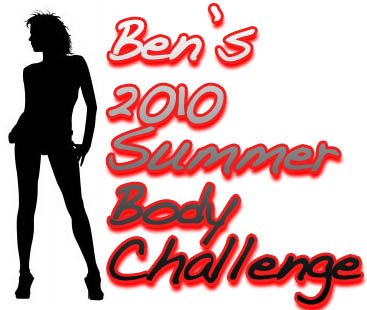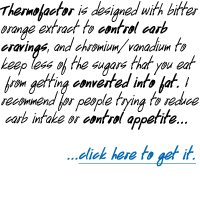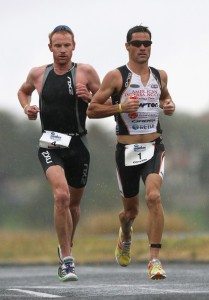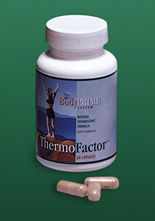April 28, 2010
Click here for the full written transcript of this podcast episode
In this April 28th free audio episode: sunscreen, vegan diets, foam rollers vs. muscle sticks, training with crossfit, carb cravings, personal training certifications, gut problems during exercise, and joint pains.
Remember, if you have any trouble listening, downloading, or transferring to your mp3 player just e-mail [email protected]. And don't forget to leave the podcast a ranking in iTunes – it only takes 2 minutes of your time and helps grow our healthy community! Just click here to go to our iTunes page and leave feedback.
—————————————————————-
Featured Topic:
As the weather begins to heat up, I've been receiving lots of questions about skin care and sunscreen – so I decided to get an expert on for an interview about the things you've always wanted to know about sunscreen, but were afraid to ask.
If you're a triathlon fan, perhaps you know that Ironman world champion Craig Alexander has been wearing a new, healthier, more waterproof type of sunblock. The inventor of that sunblock, Nic Martens, Ph.D., has held key leadership positions throughout his 12 years with Johnson & Johnson (J&J) in Research and Development for Fast Moving Consumer Goods.
Nic launched several “market-disrupting” products with significantly superior features and benefits relative to competing products, including the biggest launch in Neutrogena’s history. He developed a breakthrough sun protection technology that delivers superior protection against harmful UVA rays, and his educational background includes a Ph.D. from the University of Cambridge (UK), and a BS degree from the University of Munich (Germany). During our discussion, I ask Nick the following questions:
We all know that “too much sun” is probably a bad thing, but can you explain what actually happens to the skin of people, especially athletes, who spend a lot of time in the sun?
Do environmental conditions, like sand or snow, play a role?
Would exercise contribute to the damage, say, via more free radical production?
What’s the difference between the UVA and UVB rays?
How does sun screen work?
Should people look for, or avoid, certain ingredients on the their sun screens?
Athletes exercising in hot weather complain that sunscreen makes them feel hotter and reduces cooling. Could this be possible?
Some would argue that sun screens cause as much cancer as the sun, due to carcinogenic chemicals in the suncreen. Is this true?
What about vitamin D? Could wearing sun screen affect vitamin D production?
Is there something that can be put into suncreen that makes it less likely to sting the eyes?
Finally, what is your take on tanning beds?
For all BenGreenfieldFitness listeners, Scape Labs is offering a “sample pack” which contains their 3 main items: lotion, lip balm and Face Stick. Retail is normally $30, but you get all 3 for $25, shipping included.
None of these products are available for retail purchase (yet!) but all you need to to do get hooked up with Scape Labs is e-mail [email protected] with the subject “Sample Pack”, or just mention that you heard about them from BenGreenfieldFitness.com. You'll get Dr. Marten's formulation sent straight to you.
—————————————————————-
Special Announcements:
 1. $300 in cold, hard cash, a FREE Gymstick, and a 1 hour personal interview with Ben Greenfield…a free one year membership and access to all past archives of Ben’s Body Transformation Club….a once-in-a-lifetime opportunity to get the body and health you’ve always wanted….Sound interesting? From May 1-May 15, Ben will be accepting entries for a brand new event called Ben’s 2010 Summer Body Challenge.
1. $300 in cold, hard cash, a FREE Gymstick, and a 1 hour personal interview with Ben Greenfield…a free one year membership and access to all past archives of Ben’s Body Transformation Club….a once-in-a-lifetime opportunity to get the body and health you’ve always wanted….Sound interesting? From May 1-May 15, Ben will be accepting entries for a brand new event called Ben’s 2010 Summer Body Challenge.
2. The 2010 Ironman CDA Triathlon Camp is being taught by Ben Greenfield from Sunday, May 16- Wednesday May 19, 2010, and is specifically designed to completely prepare you for the race course, race day tactics and nutrition and pacing strategies for Ironman Coeur D' Alene! Click here for more information and to register.
3. Ever wonder if your swimming technique is all it could be? Want to know if your bike is fit properly, or if you have a good pedal stroke? Would you like to know if your running gait is slowing you down or setting you up for injury? Our online video analysis of swim, bike or run is quick way to get professional feedback, inexpensively. Click here to get started now with a swim, bike or run video analysis from Ben Greenfield and the team at Pacific Elite Fitness. Want to see what a video analysis looks like? Check it out by clicking here.
 4. Get insider VIP tips and discounts from Ben – conveniently delivered directly to your phone! Just complete the information below…
4. Get insider VIP tips and discounts from Ben – conveniently delivered directly to your phone! Just complete the information below…
—————————————————
Listener Q&A
Do you have a question for Ben? Just click Ask a Podcast Question at the bottom of this page and leave a voicemail, leave a Skype voicemail to username “pacificfit”, or e-mail [email protected].
Sarah Asks: ” I'd like to know your opinion on foam rollers vs. the muscletrac device that is on your website. I'd like to invest in something to use post-exercise for massage and to aid recovery and I'd like to know what may be the better purchase!”
Listener Kel asks: I really identified with listener Thomas’s question in podcast 91 about his calf muscles. I have a similar problem and your response last week touched on a few parts of my issue. I am currently training for weight loss and I’ve come a long way, at the moment I’m weighing 115kg but I still have a lot further to go. In February this year I started to play basketball at a local club, I had previously played all though high school and college. It’s a means of adding some recreational sport into my life instead of just living at the gym. My problem is that after training I often suffer from pains in my knees, ankles, calves and the heels of my feet. My heels are often the worst and sometimes it’s agony to put weight on them the next day. I started to encorporate running into my exercise programme but found the same issues creeping up, so now I just stick to cycling, cross-trainer and swimming for cardio. I want to get back to running eventually though because in the past I have found my weight to drop when I was running regularly. I’ve no major issues with my feet or joints (I’m still in my late 20’s) and I’ve been for foot and gait analysis twice in the last 6 months so I know I’m wearing decent footwear. As you know basketball involves a lot of eccentric movement and until I shift some of the weight then these issues will just keep creeping up, but sometimes it feels like a catch 22 situation. Could you suggest any further exercises I could do in the gym to try and condition my legs a little more? I’m quite under educated about leg exercises compared to what I know about upper body exercises. And in the meantime are there any sort of gel pads I could slip into my shoes when playing basketball to try and absorb a bit of the impact so I don’t get as much pain?
Listener Josh asks: “Can you recommend a personal training certification course, possibly that I could attend during the summer (when I'm not teaching)? I teach in a small town in Tennessee. The gym here is small (basic dumbbells, some older circuit equipment, 1 bench press stand, 1inclined stand, etc.) so you can see the appeal of body weight training & CrossFit. I have had people ask me to train them- for a sport or just to get in shape- and I want to, but I also want to do it the right way. I don't want to be one of the amateurs who has a client call in to your show and you're like “What the hell is he telling you?!” I don't have time to go back to school to get a degree (I have an English PhD already, I can't go back AGAIN) and there's no one near this small town who is qualified to really train anyone. I want to help these students and the adults who have come to me, but I also want to do it right. I was a gym rat in college and an avid reader of the latest research. PhD work, marriage, and twin girls halted that, but I've started getting back in shape and I'm starting to read what I've missed in the last six years. I just don't want to get a “certification” to charge people money- I want to learn what I need to know.”
In my response, I recommend the NSCA, NASM, ACSM and ACE, as well as the book at http://www.trainfortopdollar.com
 Listener Brian asks: “I can control sugar/carb cravings all day but in the evenings the cravings seem to be much stronger? Is this low blood sugar? Any recommendations.”
Listener Brian asks: “I can control sugar/carb cravings all day but in the evenings the cravings seem to be much stronger? Is this low blood sugar? Any recommendations.”
Listener Josh asks: “How would you construct an exercise program that incorporates CrossFit and Cardio-Strength training (Tabata Protocol! Complexes, Density Training, etc.)?
I recommended that Josh check out this link: http://bengreenfieldtri.blogspot.com/2009/12/how-to-combine-crossfit-and-triathlon.html
Listener Kathryn asks: “Thanks for another great post. I'm writing specifically regarding your book recommendations and that you are in the middle of reading THrive. After completing it about 5 weeks ago I switched to a vegan diet and for the most part absolutely love the results. My question is what are your thoughts of the vegan diet for an athlete. I'm a competitive primarily olympic distand/ 1/2 IM triathlete? And what do you think of the 80/10/10 diet? I've read a lot of strong testimonials but the fruit only/fructose scares me a little?”
Listener Jerry asks: “What is your opinion of this homemade energy gel?
Ingredients1 cup Brown Rice Syrup (try Lundberg’s Organic Sweet Dreams Brown Rice Syrup)1/2 cup Barley Malt (try Eden’s Organic Barley Malt syrup)1/4 cup Unrefined Coconut Oil1/4 cup Organic Creamy Peanut Butter, all natural variety (without hydrogenated oils or sugar added)1 teaspoon Sea Salt1/4 cup hot waterMethodUse a make-shift double boiler by placing a glass jar inside a saucepan. Fill the saucepan with water so that the jar is a little more than half immersed.Combine all ingredients except for the hot water into the jar. Turn heat to med-low and warm mixture, stirring frequently, until it is runny and well combined, about 10 minutes.Remove from heat, then remove the jar from inside the saucepan. Add the hot water to the mixture in the jar, stir and shake vigorously until well combined and no separation occurs. Let cool.Fill gel containers as needed for workouts. Store extra gel in the jar with a lid in a cool, dry place.NotesThe gel will stay liquid enough to easily squirt from your tube-like container during workouts or races. In cold weather, the gel may become quite thick. Test it out, you may need to add a little more water for a thinner consistency in cold weather, or try storing it close to your body for heat during a workout.LOW-DOWN ON THE NUTRITIONOne ounce of this gel contains 150 calories, 24 grams of carbohydrates, 1.8 grams of protein, and 5 grams of fat- ratio of approximately 64% carbohydrates, 5% protein, and 30% fat. Mostly carbohydrates, but enough protein and fat to balance your blood sugar and keep it from spiking or dropping during a workout or race- which is crucial to maintain your energy!BROWN RICE AND BARLEY MALT SYRUPSThe brown rice syrup, the main ingredient in the gel, is 46% complex carbohydrates (polysaccharides), 29% maltose (a disaccharide), and 25% glucose (a simple sugar). Brown rice syrup also provides .46 g of protein in 2 TBSP. The barley malt syrup is 76% maltose, 16% glucose, 6 % sucrose (a disaccharide), and 2% fructose (a simple sugar). Barley malt syrup also provides nearly 3 g of protein in 2 TBSP. Both of these syrups are slow and easy to digest and provide the body with an immediate burst of necessary energy (due to the simple sugars), and then lasting carbohydrates (the poly and disaccharides) to refuel your cells. These syrups are about half as sweet as sugar to the taste.UNREFINED COCONUT OILI used coconut oil to run a marathon. Great stuff. I have a sensitive stomach when I workout, my body turns off digestion more than most. The morning of my big race, I ate two spoonfuls of coconut oil, a banana and miso soup. It was the perfect fuel for my marathon. Coconut oil belongs to a special class of fats called medium-chain fatty acids. These fats are not normally stored in your body as fat, but are instead quickly converted to energy. They also boost your metabolism. This makes unrefined coconut oil an excellent oil for weight loss and athletic performance, as it helps produce lean body mass.ORGANIC PEANUT BUTTERThe Peanut butter provides valuable monounsaturated fats, protein, and flavor to the energy gel. Make sure to choose an all natural variety that only contains organic peanuts and salt. Avoid peanut butter with added sugar and hydrogenated oils (trans fat).SEA SALTSea salt provides valuable minerals for electrolyte balance. A high quality sea salt is rich in potassium, magnesium, sodium chloride, and trace minerals.
Congratulations to Jerry, who was nominated as the top question for this week's podcast! Jerry will receive a free month of membership to the Body Transformation Club, full access to the Club's secret video page, the life-changing piece of Club mail that I will personally send him each week, and much more. To learn more about the Body Transformation Club, click here.
Patrick asks: “I'm having GI issues on my longer brick workouts. I don't know how to put the elegantly, so I guess it's best to just say it: I always have to take a relatively large BM when I run off of long bike rides with lots of fueling. I started noticing it last year when I was eating lots of cheap pizza, pasta and rice and figured that it was due to poor nutrition. My diet it still not bulletproof, but feel like I've made a lot of progress in that area. My last workout was a 90 mile aerobic ride and a 20 minute run at LT. I thought I had fueled fairly minimally (~250 calories an hour), but still had issues after about 10 minutes into the run. Any thoughts? I used primarily Infinit for on-the-bike fueling, and supplemented with a Snicker's Marathon bar and a regular pack of Almond Joy, taking a mouthful every 45-60 mins. Drink was plain water with NUUN tabs. Fueling prior to that was oatmeal in the morning. The day before was a banana and almond butter toast for breakfast, a veggie sub for lunch and healthy snacks but (just realized) fried chicken w/ store-bought mashed potatoes and green beans for dinner the night before. But can I really point the finger at one meal?”
Remember, if you have any trouble listening, downloading, or transferring to your mp3 player just e-mail [email protected] And don't forget to leave the podcast a ranking in iTunes – it only takes 2 minutes of your time and helps grow our healthy community! Justclick here to go to our iTunes page and leave feedback.
 Brand new – get insider VIP tips and discounts from Ben – conveniently delivered directly to your phone! Just complete the information below…
Brand new – get insider VIP tips and discounts from Ben – conveniently delivered directly to your phone! Just complete the information below…




Great podcast, two questions:
1) Are there any other sunscreens worth considering other than the interview subject own product? It doesn’t sound like it all that available yet. BTW thanks for the vitamin D question, it was exactly what I was wondering.
2)Thanks for continuing to offer information on plant based nutrition. I follow an 80-10-10 plant based diet, but not raw, because that is what Ornish, Esselstyn and McDougall have demonstrated reverses cardiovascular disease. (although I do know a former Jittery Joe’s racer who is raw and still stupid fast) I agree that B12 is a must in the modern world, vitamin D is a sunshine issue, but I was puzzled by your fat recommendations. The research I have looked at indicates we need single digit percentages of daily calories from omega 3 and 6 EFAs. Why do you recommend 15-25%? Is there a benefit that outweighs the cardiovascular risk?
In regards to your email newsletter about nutrition you listed energy bars that you recommend people use. Are Clif bars too much like a candy bar? These are the only bars I can get at my grocery store and they are almost always on sale! I would rather not have to always be ordering online every few weeks if possible.
Clif bars are generally OK…they’re one of the companies that uses pretty good ingredients.
Great question, Lance. I’ll answer in the next podcast from https://bengreenfieldfitness.com . Be sure to listen at your convenience, leave a ranking in iTunes and spread the word to your friends!
Cheers,
Ben